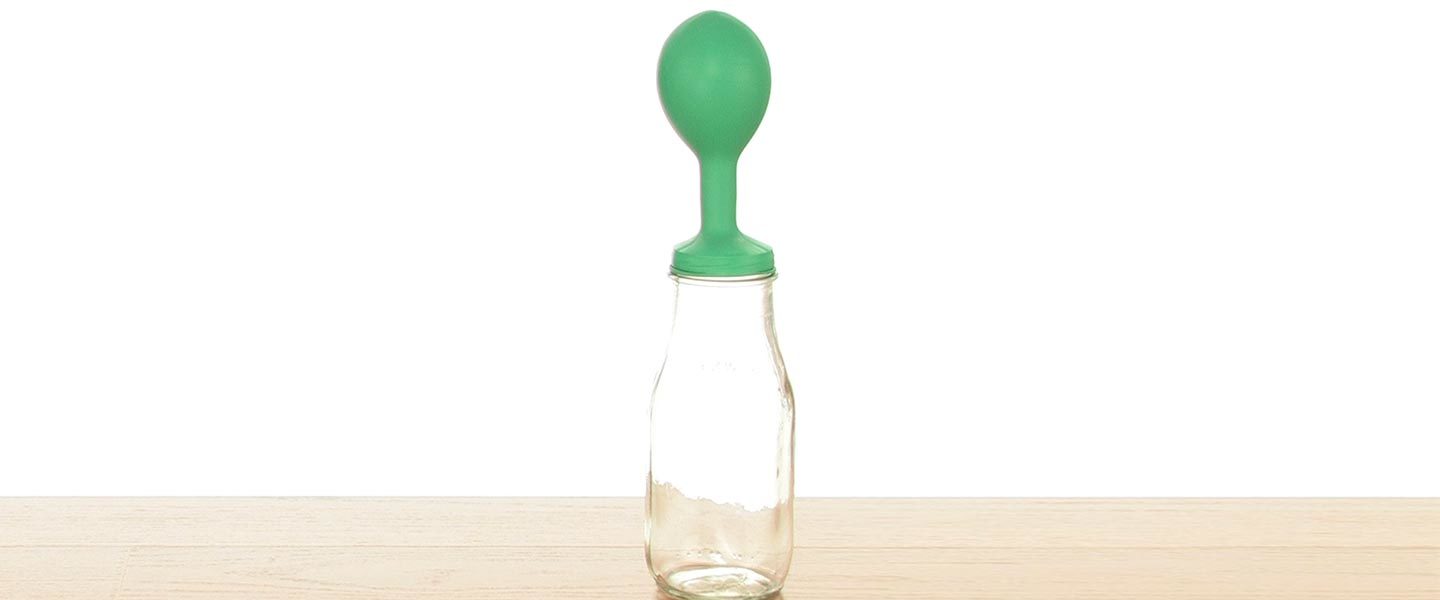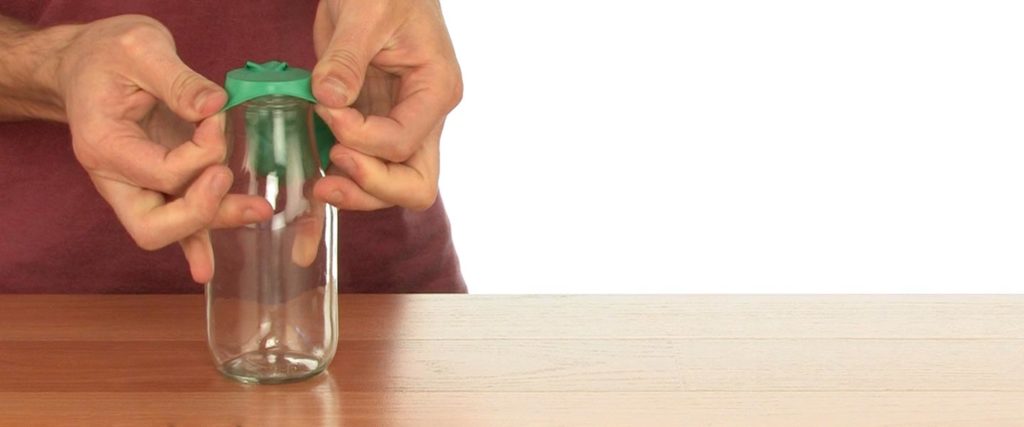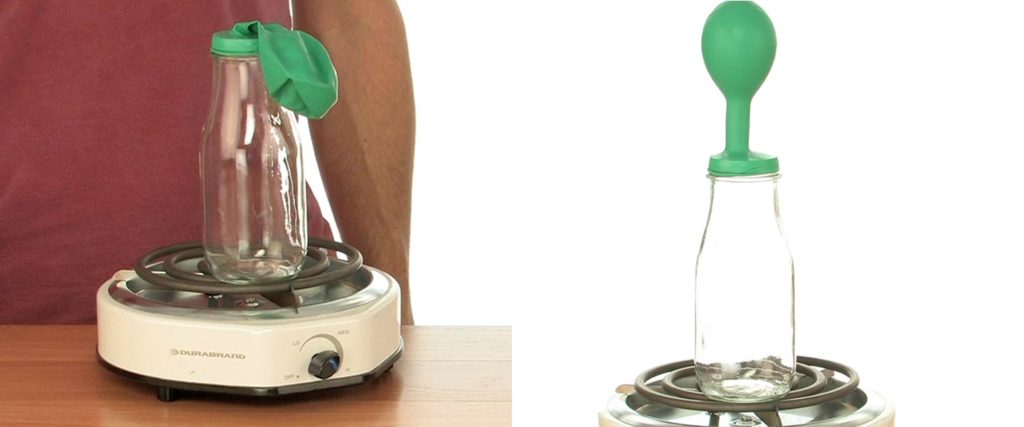Balloon-Powered Car
When it comes to powering a race car, there are a lot of options. Some cars use gasoline, diesel fuel, rocket fuel, or other combustible […]

Here’s a great way to actually see how air fills more space and then less space as its temperature changes back and forth between warmer and cooler. You can easily demonstrate these changes in volume with just a few items you probably already have in your home, too. In the end, you’ll prove that air is a form of matter and it takes up space even in an “empty” bottle.

WARNING: Safety glasses MUST be worn for this lab!
Stretch the opening of the balloon around the open end of the bottle. Be sure the bottle is sealed and the balloon can’t come off easily. It helps to center the balloon in the mouth of the bottle, too.

Place the bottle on the hot plate. Turn on the hot plate and select a medium-low heat setting. See “Safety Information” below.
Give the bottle and balloon apparatus a few minutes to get warm. This may take a a little while. Use a camera for pictures or even a video to study later on to check the data you collect.
The balloon will fill up with hot air and stand straight up. When that happens, turn off the hot plate and leave the bottle on the hot hot plate. DON’T touch the glass! It will be very hot.
Use the hot pad to remove the bottle to a heat-safe location so the glass can cool. Watch what happens to the balloon as the bottle cools. Pictures are a good idea here, too. You know what to do if you want the balloon to inflate again!
This activity shows that air really is matter (has weight; takes up space). What made the balloon get bigger? It’s simply the expansion of air trapped in the bottle and the balloon. Air expands when it is heated; it spreads out and either fills a larger space or raises the pressure in a closed space. Since the bottle and the balloon were full of air molecules when you stretched the balloon over the opening and sealed them inside, they began to expand upward into the balloon as the bottle was heated. The air molecules moved faster and faster as the temperature rose and they could spread out and fill a larger space as a result. The expanding balloon showed that this was happening. When the heat was removed, the air molecules contracted (got closer together), took up less space, and the balloon collapsed. However, add a little heat again and it starts all over.
Heat energy can be moved from place to place by conduction, radiation, and/or convection. The bottle on the hot plate gets hot because glass conducts (carries or moves) heat from one place to another. If you support the bottle over the hot plate (so the two don’t touch), then the bottle gets hot due to heat radiating from the hot plate (like sunshine). Convection occurs when a fluid (like air) is heated and rises in its center. It cools as it rises and then falls back down the outside of the rising, hotter fluid. At the bottom, it’s heated again and rises in the center in a steady up and down “convective” flow. It’s likely that convection is occurring inside the sealed bottle as heated air rises into the balloon, cools, and then falls back into the bottle to be heated again.
You’re working with a limited amount of air inside the sealed bottle. What happens if you add a tablespoon of water before putting on the balloon? What have you added to the system? What might be the result of adding the water?
What does immersing the warm bottle in room temperature water cause the balloon to collapse even faster? What might be happening if the balloon gets pulled into the bottle a little bit? What does that tell you about differences in air pressure inside and outside of the sealed bottle?